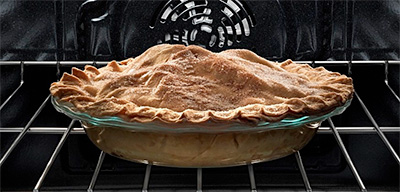Convection cooking can be intimidating for even the most seasoned cook. Our Institute of Home Science expert Anna Carl gives us the basics so you can get the most out of your oven.
Convection cooking differs from a traditional oven because of the addition of a fan. Traditional ovens use a heating element to heat the entire cavity. Convection cooking adds a fan to evenly circulate air throughout the oven cavity. This often leads to more even heating throughout the cavity.
 Because the fan evenly distributes heat throughout the oven, convection cooking is ideal for multi-rack cooking. The fan allows air to circulate around the racks so that all racks experience a similar temperature. In a traditional oven, the rack closest to the heat source would have the highest temperature, with the rack furthest away having the lowest.
Because the fan evenly distributes heat throughout the oven, convection cooking is ideal for multi-rack cooking. The fan allows air to circulate around the racks so that all racks experience a similar temperature. In a traditional oven, the rack closest to the heat source would have the highest temperature, with the rack furthest away having the lowest.
Many ovens have both conventional and convection modes. Convection is best used when you would like a golden brown and crispy coating. It is great for roasts, pies, and toasting. Convection also shines in baking. The even heating of convection makes it possible to utilize 3 racks in your oven cavity, evenly baking cookies and pastries.
Convection Tips:
- Set your timer 10 to 15 minutes earlier. Because of the more even heating, some foods can cook faster.
- Reduce your oven temperature by 25 degrees. Most recipes are written with traditional baking in mind.
- Allow at least 2 inches above, below and around your items. This will allow adequate space for air to circulate allowing more even cooking.
For other helpful tips and videos visit InstituteofHomeScience.com.